Just as a symphony requires each note to perform in harmony, a commercial move demands meticulous orchestration.
Starting the relocation process early maximizes efficiency, precluding costly business interruptions and disparate efforts that could crescendo into chaos.
An enterprise’s relocation is comparable to conducting a complex ensemble—it necessitates precise synchronization of pre-move planning, execution, and thoughtful post-move strategies to ensure the business ‘performance’—uninterrupted operations and seamless service to clients—resumes with minimal downtime.
Key Points:Commercial Moving Services
- Start planning your commercial move early (3-6 months in advance).
- Minimize downtime by scheduling the move outside of business peak times.
- Track and protect your inventory with proper labeling and inventory management practices.
- Address logistics challenges by selecting a reliable moving partner with experience in commercial moves.
- Ensure a quick return to business by setting up your new space for immediate operation and providing support to your team in adapting to the new environment.
Table of Contents
ToggleEarly Planning: The Foundation for Smooth Relocation
Astute anticipation of potential obstacles sets the stage for a seamless commercial transition. Well-defined objectives and delineated responsibilities lay the groundwork for a masterful move, circumventing common pitfalls that could disrupt your corporate symphony.
It is imperative that every phase of the move, from initial inventory assessments to the final placement of furnishings, aligns with a meticulously established timeline. This ensures that each aspect of the relocation is allotted its due attention, fostering an environment where efficiency and foresight take precedence over reactive measures.
Adhering to a strategic roadmap and leveraging seasoned professionals are hallmarks of commercial moving success. Strategize early to transform relocation from a daunting task into a triumph of logistics and planning.
Checklist Creation: Your Roadmap to Success
Constructing a comprehensive checklist is paramount. It ensures methodical progress and allocates tasks evenly, streamlining each phase towards a successful move.
An effective checklist acts as your relocation concierge, heightening accountability and facilitating a clear progression. It embodies the strategic foresight required for a frictionless transition.
Over 44% of relocation delays are due to inadequate preparation.
Harnessing a well-crafted checklist ensures that no detail is overlooked—from the procurement of packing materials to the final systems check. It becomes the linchpin that secures a cohesive and efficient moving experience for all involved parties.
Vendor Selection: Choosing Your Moving Ally
Selecting a commercial moving partner is not merely a transaction; it requires careful consideration of a firm’s capabilities, reliability, and past performance. It is imperative that this entity reflect not only your logistical needs but also your corporate ethos.
Evaluate the company’s track record in over-seeing complex commercial relocations. Due diligence is not just advisable; it is paramount.
Understandably, budget parameters often frame the selection process, emphasizing the cost-effectiveness of prospective movers without sacrificing quality.
Establish clear lines of communication with potential movers, scrutinizing their responsiveness, transparency, and attention to detail, which are indicative of their customer service caliber.
Accreditation, such as AMSA’s ProMover certification, can provide reassurance of a mover’s ethical practices, providing a layer of trust to enterprises seeking dependable relocation partners.
Finally, ensure your chosen vendor’s scope of services aligns with your move’s specific requirements. A thorough alignment of capabilities ensures a harmonious execution of your relocation plan.
Pre-Move Briefings: Aligning Your Team
Alignment is pivotal to pre-move success.
A methodical pre-move briefing is fundamental to aligning your team’s expectations and roles. It ensures that every team member is cognizant of their responsibilities and the broader objectives of the move. Crucially, this alignment is essential to mitigate disruptions and maintain continuity of operations during the transition. Proactive communication is key to fostering a unified approach to the relocation effort.
Briefings catalyze a cohesive transition strategy.
Empowering your team through comprehensive briefings is essential — clarity equals readiness. An informed team is more capable of handling the unforeseen challenges of a commercial relocation. Moreover, the briefings should delineate the envisioned post-move setup, providing a clear picture of future workflows and operational synergies to be achieved through meticulous planning and execution.
Ensure an understanding of the relocation’s intricacies.
In the commercial moving landscape, every detail matters. From the logistical coordination to the precise timing, disseminating this knowledge among your team creates a powerful, collective force that can handle critical tasks proficiently while also providing peer support. This fosters a culture of accountability and excellence throughout the moving process.
Regular updates fortify team resilience and adaptability.
Stay abreast of the most cutting-edge techniques and practices for commercial moving by subscribing to reputable moving journals such as the American Moving & Storage Association’s Directions magazine, ensuring you remain conversant with the advanced strategies and regulatory changes shaping the industry as of 2023. This knowledge equips your management team with the insights required to conduct effective briefings throughout the moving journey.
Minimizing Downtime: Effective Move Strategies
To curtail operational disruptions, strategic planning is paramount. Selecting an off-peak time for the transition—often after business hours or on weekends—can vastly diminish the impact on your business continuity. Furthermore, a phased move, distributed over manageable stages, can facilitate an uninterrupted workflow and protect revenue streams during this pivotal period.
Pre-move communication with all stakeholders cultivates a shared understanding of the move’s timeline, resulting in a synchronized effort. Establishing detailed checklists and assigning specific roles ensures every team member contributes effectively to a swift and orderly relocation, thereby upholding productivity and client service excellence.
Off-Peak Scheduling: Moving When It Matters Least
Selecting a strategic time for your commercial move is of the utmost importance. Off-peak scheduling is a critical practice that prioritizes your business needs while facilitating the relocation process.
By planning a move during your business’s lowest activity levels, you minimize disruptions that can impact your operations. This is often after regular business hours, on weekends, or during seasonally slow periods, depending on your specific industry trends.
Coordinating a move outside of peak times not only reduces the potential for business interruption but also affords your moving team more flexibility. This can result in a more efficient execution of the move, mitigating delays and potential complications that accompany busier hours.
Adopting an off-peak scheduling strategy requires detailed analysis of both your business cycle and the capabilities of your moving partner. Meticulous planning and transparent communication ensure that your company’s productivity remains uncompromised throughout the move.
Your commitment to off-peak scheduling underscores a deep understanding of your business rhythms, demonstrating foresight that can lead to a less stressful and more successful transition.
Critical Operations Continuity: Keeping the Wheels Turning
To safeguard the pulse of your enterprise during relocation, a meticulously crafted continuity plan becomes indispensable, manifesting a fail-proof strategy to uphold critical functions without fail.
Empower each department with a tailored contingency plan, focusing on minimally invasive relocation methodologies for each sector.
During this critical juncture, establish temporary operational hubs when necessary, leveraging the agility of digital platforms (like cloud-based services and remote access) to maintain momentum.
Analyze operational workflows to pinpoint absolute essentials; extract these processes and insulate them from the relocation tempest, hence preserving core business functionality.
It is imperative to maintain stringent communication protocols, ensuring every team member is apprised of transitional statuses and operational shifts, thus allowing them to respond adeptly to changes with precision.
Moreover, once the move is actualized, expediently testing systems’ integrity and performance is crucial, facilitating the reclamation of full operational capacity posthaste.
Inventory Tracking: Safeguarding Your Assets
Accurate inventory management during a commercial transition is paramount, as it constitutes the foundation of asset protection and tracking continuity. Prioritize the deployment of a meticulous inventory tracking system, utilizing barcoding and digital inventory databases, to maintain a real-time ledger of your company’s assets. This allows for the swift identification and allocation of resources at the new location, forestalling potential operational disruptions. By meticulously documenting each item’s condition before, during, and after the move, the integrity of your assets remains inviolable, ultimately ensuring their seamless reintegration into the business’s daily workflow, ready for immediate use.
Advanced Tech for Asset Management: The New Inventory Solution
Innovative technology revolutionizes asset management techniques.
Implementing cutting-edge technology is elemental for contemporary asset management. Advanced systems facilitate real-time tracking and analysis of assets, providing an unparalleled overview. RFID tags, GPS tracking, and cloud-based inventory databases offer businesses the ability to monitor their assets with precision and efficiency. Consequently, this contributes to a significant reduction in asset mismanagement and loss during a commercial move.
Harnessing the power of technology for inventory control.
An intelligent inventory system is key to mitigating risk. By incorporating machine learning and artificial intelligence within inventory systems, businesses can predict potential issues before they arise. This preemptive approach is critical to maintaining business continuity and asset integrity throughout the relocation process.
Navigating inventory challenges with tech-forward tools.
Advanced technologies offer dynamic solutions to inventory management. They present a transformative approach for businesses aiming to uphold superior control over their assets. These solutions, when integrated within the strategic planning of a move, can significantly enhance the accuracy and speed of asset reallocation in the new commercial space.
Artificial intelligence simplifies complex inventory needs.
Leveraging AI in asset management enables enhanced decision-making. Predictive analytics and trend analysis empower companies to make informed choices, which is crucial for a streamlined transition. The adoption of such technologies by the close of 2023 heralds a more efficient future for commercial moving processes. This integration promises more robust and responsive asset management strategies within the commercial relocation sphere.
Pre- and Post-Move Auditing: Ensuring Accuracy
A thorough pre-move audit lays the foundation for a meticulous transition strategy. It allows for the identification and cataloging of all assets, bolstering the precision of the inventory before the upheaval begins.
A post-move audit, conducted immediately after the relocation, serves to reconcile the expected assets with those delivered. This critical step ensures that each piece of equipment, furniture, and inventory arrives at the destination as planned. Discrepancies can be quickly identified, minimizing the impact on business continuity and allowing for prompt resolution.
To uphold the integrity of the auditing process, it is imperative to employ a systematized approach. Detailed checklists and barcoding systems streamline the verification of assets, facilitating a seamless reconciliation process that mitigates the risk of error or loss during transit.
In conjunction with these protocols, incorporating digital tools like Radio-Frequency Identification (RFID) and cloud-based asset management software amplifies the efficiency of pre- and post-move auditing. These systems provide real-time tracking and updates, enhancing the traceability of assets throughout the moving process, which is indispensable for maintaining operational momentum and safeguarding company resources.
The Logistics of Moving: Seamless Coordination
The orchestration of a commercial move is a complex ballet, necessitating fastidious planning and a systematized implementation strategy to ensure efficiency and accuracy. It demands a synchronized effort between multiple departments and a moving partner adept in navigating logistical intricacies. This collaborative approach limits disruptions and maximizes the preservation of productivity throughout the transition.
A successful transition requires not just meticulous planning but also flexible contingency strategies to address potential logistical hurdles. Selecting a seasoned commercial mover equipped with advanced technology and robust project management capabilities is pivotal. They provide the logistical backbone, deftly managing the relocation to uphold the fluency of your business operations.
Tackling Logistical Challenges: Proactive Problem Solving
Assertiveness in managing logistical complexities is crucial to preemptively address and mitigate potential roadblocks before they escalate. A perspective that anticipates the unexpected reshapes challenges into manageable tasks, thus maintaining project momentum.
Protracted planning phases are counterproductive without agile response frameworks. Ensuring a flexible strategy in place allows for immediate adjustment to unforeseen circumstances.
Engaging with stakeholders throughout the relocation process, from clerical to C-suite, enables a comprehensive understanding of every facet within the move. This assimilation of knowledge facilitates precise coordination between departments, ensuring seamless operational transference.
Instituting a hierarchical response team among your staff establishes clear communication channels and responsibility delineation, essential for addressing challenges decisively. Aligning with a commercial mover who exhibits both command over logistics complexities and partnership with technological solutions results in a proactive stance against potential disruptions. It is, after all, the difference between a “migration” of operations and a transformative relocation experience.
Post-Move Setup: Hitting the Ground Running
Optimal functionality is achieved upon immediate arrival.
An effective post-move setup begins long before the move itself. It’s imperative to have a detailed floor plan and a clear understanding of the new space’s layout, infrastructure, and technical capabilities. This preemptive measure ensures that your commercial relocation culminates in a smooth transition to full operational capacity without undue delay. Additionally, correct placement of furniture and equipment streamlines the transition for employees and reduces time spent acclimating to the new settings.
Ensure IT systems alignment preempts productivity lag.
A phased transition is often superior – avoid total stagnation during the move. By sequentially moving departments, you can maintain some level of service continuity. Strategically scheduling this phased approach can balance the operational needs of the business with the complexities of relocation, ensuring minimized disruptions and sustained productivity.
Your team’s readiness is as crucial as the physical setup. Prior training on new protocols and familiarity with the updated environment accelerate acceptance and proficiency. Together with the earlier steps, this lays the foundation for a quick return to business as usual following your commercial move. This is pivotal in the effort to negate potential impacts on service delivery and client satisfaction.
Adaptation Support: Easing Team Transition
Transitioning to a new commercial space requires thoughtful strategies that support your team’s adjustment period.
- Conduct pre-move orientations to familiarize staff with the new layout and emergency protocols.
- Present interactive maps or virtual tours of the new environment to help employees visualize their new workspace.
- Establish a mentorship or buddy system where experienced employees assist new hires or less experienced team members.
- Organize team-building activities within the new space to foster comfort and camaraderie.
- Designate transition leaders for each department to address concerns and gather feedback during the adjustment period.A smooth transition is facilitated by proactive communication and support mechanisms.
Rapid adaptation is solidified through well-orchestrated initiation procedures and responsive leadership.
Frequently Asked Questions
What are commercial moving services?
Commercial moving services refer to professional services that help businesses relocate their offices, facilities, or operations to a new location.
Why should I hire commercial moving services?
Hiring commercial moving services ensures a smooth and efficient transition, minimizing downtime and disruptions to your business operations.
How early should I start planning my commercial move?
It is recommended to start planning your commercial move at least 3-6 months in advance to allow ample time for preparations and coordination.
What are some strategies to minimize downtime during a commercial move?
To minimize downtime, you can schedule the move outside of business peak times, create a detailed moving plan, and communicate with your employees and clients about the upcoming transition.
How can I track and protect my inventory during a commercial move?
Best practices for inventory management during a commercial move include conducting a thorough inventory audit before the move, labeling and organizing items, and utilizing technology such as inventory tracking software.
What are the logistics challenges involved in a commercial move?
Logistics challenges in a commercial move may include coordinating multiple moving teams, managing transportation logistics, and ensuring the safe handling of sensitive equipment or materials.
How do I select the right moving partner for logistics support?
When selecting a moving partner for logistics support, consider their experience in commercial moves, their reputation, and their ability to handle the specific requirements of your business.
How can I ensure a quick return to business after the move?
To ensure a quick return to business, you can set up your new space for immediate operation, provide training and support to your team in adapting to the new environment, and communicate any changes to your clients or customers.
What types of businesses typically utilize commercial moving services?
Commercial moving services are commonly utilized by a wide range of businesses across various industries. From small startups to large corporations, many businesses rely on professional movers to handle their relocation needs.
Some of the most common types of businesses that typically utilize commercial moving services include:
- Offices: Businesses of all sizes and types, such as law firms, marketing agencies, and tech companies, often require moving services when relocating to new office spaces. Professional movers can help with packing and transporting office furniture, equipment, and files efficiently and securely.
- Retail Stores: When retail stores need to relocate to a new location, commercial moving services can be invaluable. From clothing boutiques to electronic shops, professional movers can assist in safely transporting merchandise, shelves, and other store fixtures.
- Restaurants and Hospitality: Restaurants, hotels, and other establishments in the hospitality industry often require assistance with moving large and heavy items such as kitchen equipment, furniture, and fixtures. Commercial movers can ensure a smooth transition while minimizing disruptions to the business.
- Healthcare Facilities: Hospitals, clinics, dental offices, and other healthcare facilities require specialized moving services to relocate delicate medical equipment, sensitive patient records, and furniture. This ensures a seamless transition for medical professionals and patients alike.
- Educational Institutions: Schools, colleges, and universities may need to relocate due to expansions, renovations, or other reasons. Commercial moving services can handle the transportation of desks, chairs, books, and other educational materials with care, allowing for an uninterrupted learning environment.
- Industrial and Manufacturing Companies: Industrial and manufacturing businesses often have unique moving needs, involving heavy machinery, equipment, and specialized materials. Professional movers skilled in handling bulky and fragile items can facilitate the relocation process efficiently.
These are just a few examples of the many types of businesses that benefit from utilizing commercial moving services. Regardless of the industry, professional movers can provide the expertise and resources needed for a successful and stress-free move.
How long does it typically take for commercial moving services to complete a move?
The time it takes for commercial moving services to complete a move can vary depending on several factors. These factors can include the size of the office space, the number of items that need to be moved, the distance between the old and new locations, and any additional services requested.
For smaller office moves, it is not uncommon for commercial moving services to complete the move within a day or two. This is typically the case for businesses with minimal furniture and equipment, and a relatively short distance between locations. However, for larger office moves with a significant amount of items to be transported, the process can take several days or even weeks to complete.
To ensure an accurate estimation of the time required for your specific move, it is best to consult with the commercial moving company directly. They will be able to assess the specific details of your move and provide you with a timeline based on their expertise and experience.
It is important to keep in mind that during the moving process, commercial moving services prioritize efficiency while also ensuring the safe and secure transport of your belongings. This may involve coordinating with building management, disassembling and reassembling furniture, packing and unpacking items, and providing specialized equipment for heavy or delicate items. All these considerations contribute to the overall time it takes to complete a commercial move.
By communicating your needs and requirements to the commercial moving company and working closely with their team, you can help streamline the moving process and potentially reduce the overall duration of the move. This collaborative approach allows for a smooth and efficient transition to your new office space.
What should businesses consider when choosing a commercial moving service?
When choosing a commercial moving service, businesses should consider several factors to ensure a smooth and efficient relocation. Here are some key points to keep in mind:
- Experience and Expertise: Look for a moving company that specializes in commercial moves and has a proven track record of successfully handling similar projects. An experienced team will have the necessary skills and knowledge to handle the complexities of a commercial move.
- Licensing and Insurance: Ensure that the moving company you choose is properly licensed and insured. This provides protection for your business in case of any damages or incidents during the move.
- Customized Moving Solutions: Every business has unique requirements when it comes to moving. Look for a moving service that offers customized solutions tailored to your specific needs. This includes factors such as equipment, inventory size, and timeline.
- Efficient Planning and Project Management: A reputable commercial moving service should have effective planning and project management processes in place. They should be able to provide you with a detailed timeline, coordinate logistics, and communicate with all stakeholders involved.
- Equipment and Tools: The moving company should have access to modern and reliable equipment and tools to ensure the safe handling of your commercial goods. This includes equipment like dollies, ramps, and trucks equipped with lift gates for efficient loading and unloading.
- Employee Training and Background Checks: Ask the moving company about their employee training programs and whether they conduct thorough background checks. It’s crucial to ensure that the moving team is experienced, skilled, and trustworthy.
- Reputation and Reviews: Research the reputation of the moving company by reading reviews and testimonials from previous clients. This will give you valuable insights into their service quality and customer satisfaction levels.
By considering these factors, businesses can make an informed decision when choosing a commercial moving service and ensure a successful and stress-free relocation process.
How do commercial moving services differ from residential moving services?
Commercial moving services differ from residential moving services in several key ways.
Firstly, the scale and complexity of commercial moves are typically much larger and more intricate than residential moves. Commercial moves often involve the relocation of entire office buildings, warehouses, or retail spaces, which can require specialized equipment, planning, and manpower. Residential moves, on the other hand, usually involve the relocation of individual households or small apartments.
Secondly, commercial moves often require a higher level of coordination and organization. This is because commercial moves may involve multiple departments or teams within a company, each with their own specific needs and requirements. Coordinating the logistics of moving equipment, furniture, and sensitive documents can be a complex task that requires careful planning and execution.
Furthermore, commercial moves may involve the transportation of specialized equipment or sensitive information. Moving companies that specialize in commercial moves are equipped with the necessary expertise and equipment to handle these unique requirements. They may have experience with moving large machinery, IT infrastructure, or valuable artwork, ensuring that these items are safely transported and set up in the new location.
Another important difference between commercial and residential moves is the timing and scheduling. Commercial moves often need to be completed within a specific timeframe to minimize disruption to business operations. This means that moving companies specializing in commercial moves are experienced in efficiently executing the move within tight deadlines, ensuring a smooth transition for the business.
Lastly, the cost of commercial moves is typically higher than residential moves due to the scale and complexity involved. Commercial moves often require specialized equipment, additional manpower, and more extensive planning and coordination. Moving companies that offer commercial moving services understand the unique needs of businesses and are able to provide tailored solutions to meet those needs.
In summary, commercial moving services differ from residential moving services in terms of scale, complexity, coordination, specialized equipment, timing, and cost. By understanding these differences, businesses can ensure a successful and efficient relocation process.





